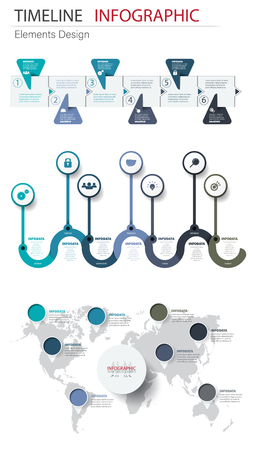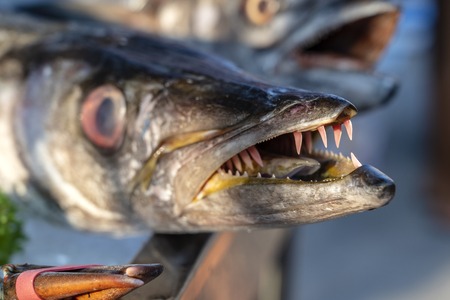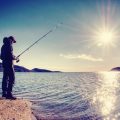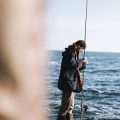1. Choosing the Right Spot: Setting the Stage for Responsible Fishing
As families, heading out on a fishing adventure is more than just packing up our gear and finding any body of water. It’s about making thoughtful choices that respect local wildlife and support conservation efforts. When we carefully pick a fishing spot, we’re not only setting ourselves up for a fun experience but also teaching our kids how to be responsible anglers. In America, many lakes, rivers, and coastal areas have specific regulations to protect fish populations and their habitats. Checking local guidelines, understanding seasonal restrictions, and respecting private lands are all part of being an ethical angler. By involving our children in this decision-making process, we give them the chance to learn firsthand how our actions can impact the environment around us. Whether it’s researching which species are native or threatened in your area or choosing designated fishing zones that promote sustainable practices, every choice matters. As parents, these moments become meaningful teaching opportunities—showing our kids that fishing isn’t just about catching fish; it’s about caring for the ecosystems that support them. This mindful approach lays the foundation for a lifetime of ethical outdoor adventures together.
2. Gear Up: Selecting Ethical Tackle and Bait
One of the most important steps in responsible fishing is choosing the right gear and bait—not just for a successful catch, but also to protect the environment and local wildlife. When we fish as a family, it’s a great chance to teach our kids about sustainability and ethical decision-making from the get-go. Instead of simply grabbing whatever is convenient, we take time together to research and select tackle and bait that minimize harm to fish populations and habitats.
Why Does Ethical Gear Matter?
Ethical fishing gear helps prevent unnecessary injury to fish, reduces bycatch, and protects sensitive aquatic environments. For example, circle hooks are less likely to deeply hook a fish compared to traditional J-hooks, making catch-and-release more successful. By using non-lead weights, we avoid poisoning birds and other wildlife that might ingest lost tackle.
Family Choices: Involving Kids in Eco-Friendly Decisions
Shopping for fishing supplies becomes a learning adventure when kids help make choices. We compare different hooks, lines, and sinkers, talking about which ones are safest for wildlife. Here’s a simple table we use with our kids to guide our decisions:
| Item | Traditional Option | Eco-Conscious Alternative | Why Choose This? |
|---|---|---|---|
| Hooks | J-Hook | Circle Hook (barbless) | Reduces injury and improves survival rates for released fish |
| Sinkers/Weights | Lead Weights | Tin or steel weights | Avoids lead poisoning in birds/wildlife |
| Bait | Live bait (non-local species) | Locally-sourced or artificial bait | Prevents introduction of invasive species; minimizes impact on wild populations |
Building Lasting Habits Together
By letting our children pick out eco-friendly gear, they become invested in protecting the waterways and wildlife they love. It turns an ordinary outing into a hands-on lesson in environmental stewardship—one that sticks with them every time we plan our next fishing adventure.

3. On the Water: Teaching Respectful Angling
Once you’re out on the water, the real lessons begin. Fishing is more than just catching fish—it’s about connecting with nature and practicing patience together as a family. Kids watch everything we do, so it’s important to model respectful angling from the moment we cast our lines.
Patience as Part of the Adventure
Let your child see that fishing isn’t always fast-paced. Talk about how waiting quietly is part of the fun, and use those peaceful moments to observe what’s happening around you. Point out ripples on the water or birds nearby, making it clear that nature has its own rhythm. This teaches kids that sometimes, just being present is rewarding.
Observation: Noticing the Little Things
Encourage your child to notice details—the way fish move in the shallows, how insects land on the water, or even changes in weather. Asking questions like “What do you think will happen if we try a different bait?” invites curiosity and careful observation, turning fishing into an interactive learning experience.
Respecting Every Catch—Big or Small
Celebrate each fish caught, regardless of size, and explain why some should be released back into the water. Demonstrate gentle handling techniques and talk about how every fish plays a role in its environment. By emphasizing kindness and responsibility, you show your child that ethical decision-making matters at every step—from hook to release.
4. The Moment of the Catch: Making Compassionate Choices
When that long-awaited tug finally happens and you reel in your catch, it’s a moment filled with excitement for both adults and kids. But this is also when ethical decision-making truly comes into play. As parents and role models, it’s important to guide children through the choices of whether to keep, release, or even relocate a fish, so they understand not just the how, but the why behind responsible fishing practices.
Explaining the Choices to Kids
Children are naturally curious and empathetic. When you’re at this crossroads, involve them in the conversation by asking questions like, “What do you think we should do next?” or “How do you think the fish feels right now?” This opens up a chance to discuss each option meaningfully, making sure they feel included in the decision.
Making the Decision: What Are Our Options?
| Choice | When to Choose | How to Explain to Kids |
|---|---|---|
| Keep | If the fish is of legal size and species for consumption, and your family plans to eat it. | “If we keep this fish, we’ll use it for food and make sure nothing goes to waste.” |
| Release | If the fish is too small, out of season, protected, or if you don’t need more fish. | “Let’s let it go so it can grow bigger or help its family. That way, there will be more fish for everyone.” |
| Relocate | If the fish is caught in a spot where it shouldn’t be (like a rescue), or if moving it helps balance an ecosystem (rare cases). | “Sometimes we move a fish to help it live in a safer place. It’s like giving it a new home!” |
The Heart of Ethical Fishing: Compassion and Respect
No matter which choice you make, emphasize that fishing isn’t just about catching—it’s about caring. Demonstrate gentle handling techniques and explain why minimizing harm matters. For example, show your child how wetting their hands before touching a fish can protect its scales. By weaving these thoughtful actions and conversations into your fishing trips, you’re raising not only future anglers but also compassionate stewards of nature.
5. Catch and Release: Proper Handling for Fish Survival
One of the most important steps in ethical fishing is making sure that when we release a fish, it has the best chance of survival. This stage is not just about letting the fish go—it’s about how we handle them, too. For families, this is a perfect hands-on learning moment, where kids can see the real impact of their actions on nature.
Gentle Handling Is Key
First things first: always wet your hands before touching the fish. Dry hands can remove the protective slime coating on their bodies, which helps guard against disease and infection. Encourage your kids to do the same—it’s a small action with big results!
Minimize Stress and Injury
Try to keep the fish in the water as much as possible while removing the hook. If you must lift it out, use both hands to support its body gently—never squeeze! Use needle-nose pliers or a hook remover for a quick and safe release. If the hook is deeply embedded, consider cutting the line close to the hook rather than pulling it out, which can cause more harm.
Why It Matters
Every fish you handle gently is another lesson for your children about respect and responsibility for wildlife. When fish are released properly, they have a much higher chance of surviving and thriving back in their habitat. This not only supports local ecosystems but also ensures future generations will get to enjoy fishing, too. So next time you’re out together, make catch and release a mindful part of your family’s fishing adventure—a simple act that teaches compassion, stewardship, and appreciation for nature.
6. Reflecting Together: Connecting Values and Memories
After a day on the water, sitting down as a family to reflect on your fishing adventure is just as important as the trip itself. Take this moment to encourage open conversations about the choices you made together—from selecting the right gear to practicing safe catch and release. Ask your kids what they enjoyed most and what they found challenging, gently guiding them to consider how their actions impact both fish and the environment. These discussions help reinforce the importance of ethical fishing habits and deepen everyone’s understanding of protecting our lakes, rivers, and oceans for future generations. Sharing stories, laughs, and even small mistakes helps create lasting memories that are rooted in respect for nature and each other. By connecting your values with your experiences, you’re not just teaching responsible fishing—you’re building a family tradition of stewardship and care for the aquatic world.


